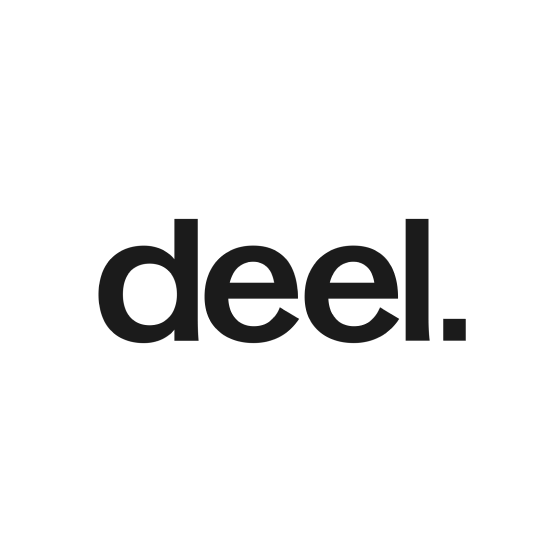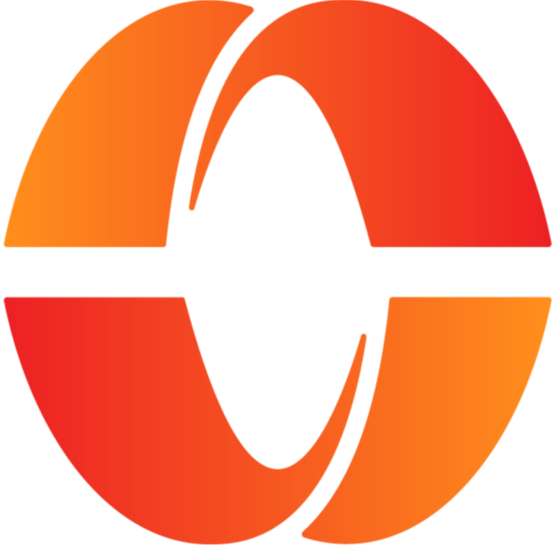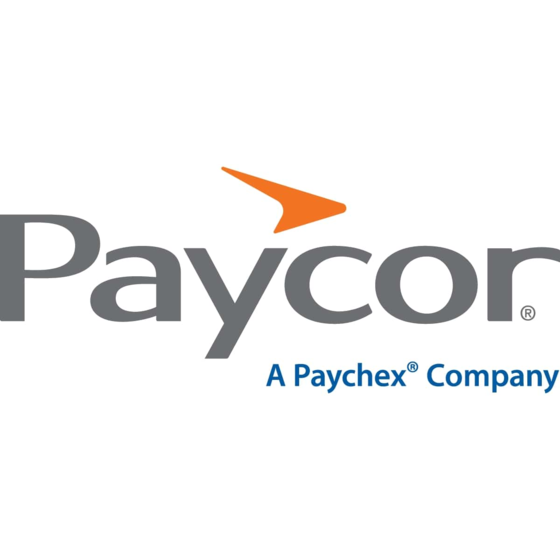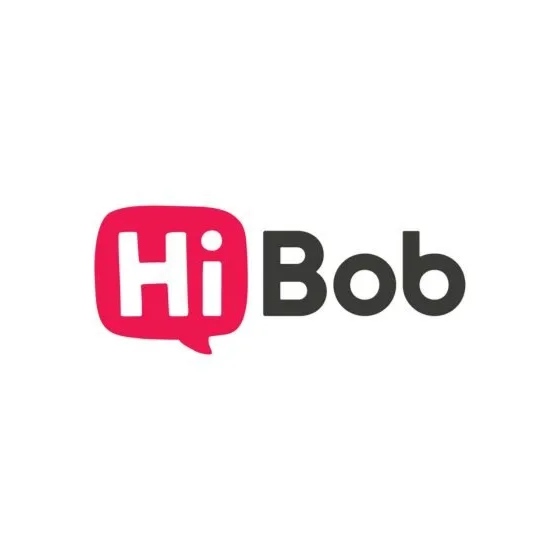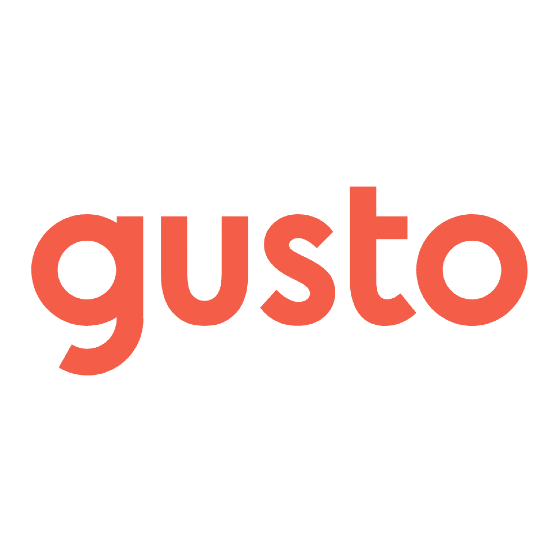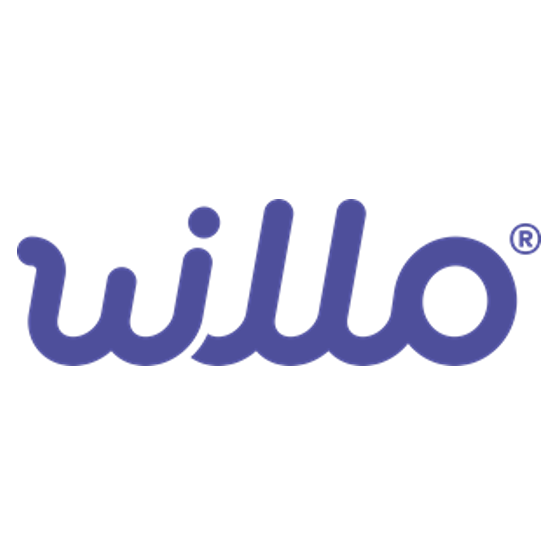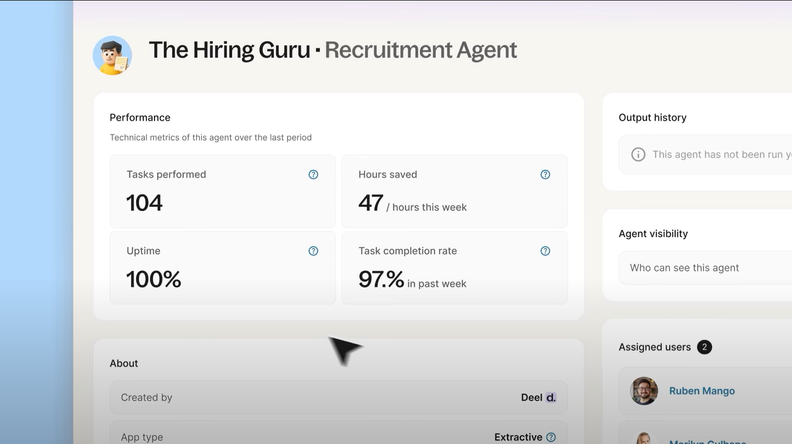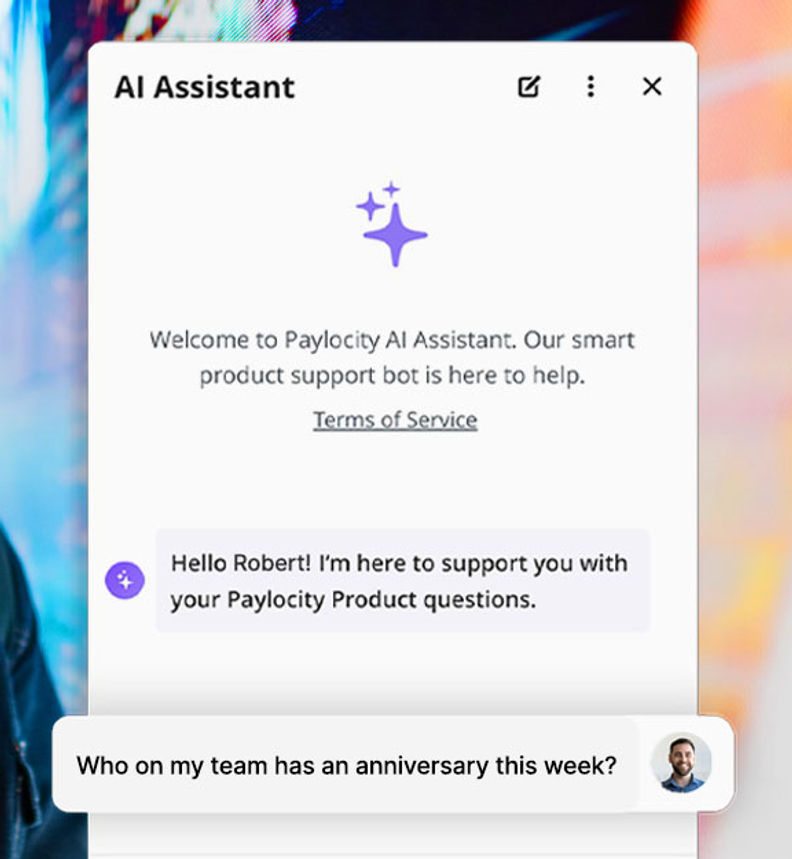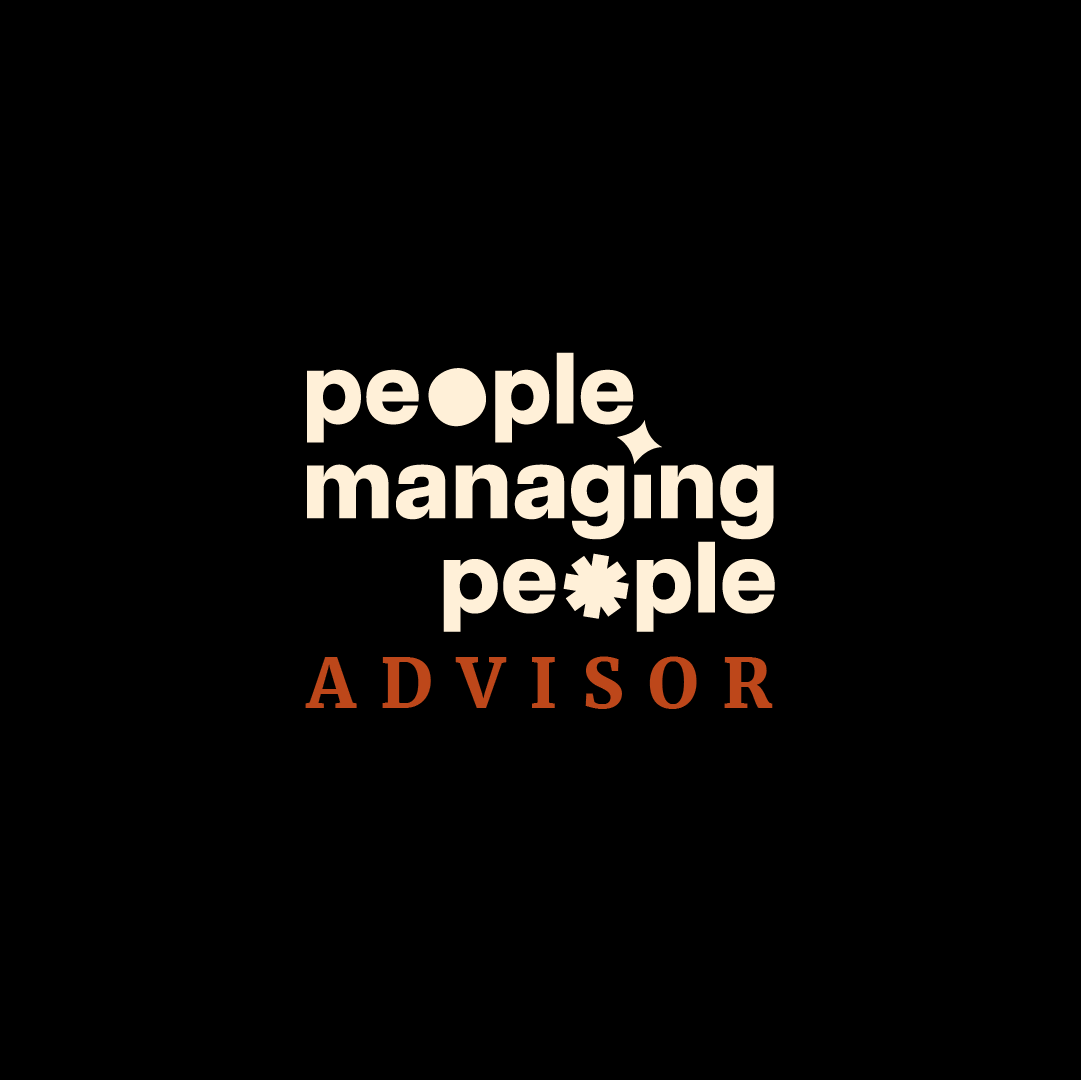10 Best Core HR Software Shortlist
Here's my pick of the 10 best software from the 25 tools reviewed.
The best core HR software helps HR professionals centralize employee data, automate repetitive tasks, and stay compliant—whether you’re upgrading from outdated systems or still managing HR processes manually. Many teams struggle with scattered spreadsheets, disconnected tools, and time-consuming data entry, which not only slows down workflows but also increases the risk of errors and compliance issues.
With the right core HR solution, you can streamline employee record-keeping, manage onboarding and benefits in one place, and gain clearer reporting to make smarter workforce decisions. These systems act as the backbone of your HR tech stack, ensuring consistency and efficiency across the employee lifecycle.
As an HR technology analyst who has reviewed and compared dozens of HR software platforms, I’ve seen how the right system can transform HR operations. In this guide, I’ll share the top core HR software solutions available today, along with insights to help you choose the best fit for your organization’s unique needs.
Why Trust Our Software Reviews
We’ve been testing and reviewing HR software since 2019. As HR professionals ourselves, we know how important and difficult it is to make the right decision when selecting software.
We invest in deep research to help our audience make better software purchasing decisions. We’ve tested more than 2,000 tools for different HR management use cases and written over 1,000 complete software reviews. Learn how we stay transparent, and take a look at our software review methodology.
Best Core HR Software: Comparison Chart
This comparison chart summarizes pricing, trial, and demo details for my top core HR software selections to help you find the best option for your budget and business needs.
| Tool | Best For | Trial Info | Price | ||
|---|---|---|---|---|---|
| 1 | Best for global payroll | Free trial + demo available | From $29/month | Website | |
| 2 | Best for employee self-service | Free demo available | Pricing upon request | Website | |
| 3 | Best for data-driven HR management | 7-day free trial | From $6.19/user/month (billed annually) | Website | |
| 4 | Best for tailored HR and payroll solutions | 30-day free trial | Pricing upon request | Website | |
| 5 | Best for comprehensive employee management | Free demo available | Pricing upon request | Website | |
| 6 | Best for managing employee lifecycle | Free demo available | Pricing upon request | Website | |
| 7 | Best for automated payroll and HR | Free demo available | From $40/month + $6/user/month | Website | |
| 8 | Best for customizable HR solutions | Free trial available | From $4/user/month (min of $150/month) | Website | |
| 9 | Best for complete HR management | Free demo available | Pricing upon request | Website | |
| 10 | Best for Microsoft ecosystem integration | Not available | Pricing upon request | Website |
-

Rippling
Visit WebsiteThis is an aggregated rating for this tool including ratings from Crozdesk users and ratings from other sites.4.8 -

Paylocity
Visit WebsiteThis is an aggregated rating for this tool including ratings from Crozdesk users and ratings from other sites.4.5 -

Willo
Visit WebsiteThis is an aggregated rating for this tool including ratings from Crozdesk users and ratings from other sites.4.8
Best Core HR Software Reviews
Here are my detailed summaries of the best core HR software that made it into my top 10 list, including notes on why I picked them. Each review offers a detailed look at the key features, pros & cons, integrations, and ideal use cases of each system to help you find the best fit for you.
Deel is a comprehensive HR platform designed to manage payroll, HR, and compliance for businesses operating globally, allowing them to hire international employees and contractors and automate various processes.
Why I Picked Deel: One of the most compelling aspects of Deel is its ability to simplify global payroll and compliance. The platform supports automated payroll processing in over 150 countries, ensuring that businesses can manage payments and compliance across different jurisdictions. This is particularly beneficial for companies with a global workforce, as it eliminates the complexities associated with managing multiple payroll systems and ensures alignment with local regulations.
Standout Features & Integrations:
Features include automated payroll processing, onboarding support, localized benefits administration, compliance management, an HRIS that manages employee data, time off, expenses, reporting, and performance management, and in-house visa and work immigration support.
Integrations include Xero, Bob, Okta, Expensify, BambooHR, Slack, QuickBooks, and NetSuite.
Pros and cons
Pros:
- Support for immigration and work visas
- Strong emphasis on compliance
- Automated global payroll
Cons:
- Onboarding process can be time-consuming
- Could offer more customization options
New Product Updates from Deel
Introducing Deel AI Workforce
Deel has launched the AI Workforce, a set of specialized agents designed to handle repetitive HR, payroll, and compliance tasks with speed and accuracy. These AI agents don’t just assist—they execute tasks from start to finish. For more information, visit Deel's official site.
Paylocity is a cloud-based HR and payroll software designed to help businesses simplify their HR processes and improve employee engagement.
Why I Picked Paylocity: It covers key areas like employee record management, compliance tracking, and benefits administration. Its employee self-service feature lets your staff access important information like pay stubs or time-off balances without having to contact HR. The system also supports onboarding and offboarding processes, making it easier to manage transitions and keep everything in one place. For companies dealing with compliance, Paylocity keeps track of key documents and regulations so you can stay on top of legal requirements.
Standout Features & Integrations:
Features include performance management, time tracking, automated workflows, mobile access, tax management, ACA compliance, surveys, compensation management, team collaboration tools, task management, and reporting analytics.
Integrations include ClearStar, Microsoft Dynamics 365, 7shifts, AirMason, APA Benefits, Azure, Atlassian, Asana, Box, ClearCompany, Dropbox, Freshdesk, Google Workspace, Greenhouse, HubSpot, Slack, Salesforce, Trakstar, and Zoho People.
Pros and cons
Pros:
- Includes tax compliance services
- Include performance management features
- On demand payment options
Cons:
- Lacks support for independent contractor payments
- Setup can be time consuming
New Product Updates from Paylocity
Paylocity AI Assistant Update
Paylocity introduces an AI Assistant that transitions from questions to actions swiftly, enhancing user efficiency. For more information, visit Paylocity's official site.
BambooHR is a cloud-based human resources software designed to help small and medium-sized businesses with their core HR functions.
Why I Picked BambooHR: I like its strong focus on employee experience and data-driven HR management. BambooHR’s performance management system stands out because it not only facilitates regular feedback but also encourages continuous improvement through 360-degree feedback and self-assessments. Additionally, its time-tracking features are excellent for managing both time-off policies and employee hours. The employee self-service options also help staff manage their personal information, allowing HR teams to focus on more strategic initiatives.
Standout Features & Integrations:
Features include advanced reporting and analytics, employee well-being surveys, automated alerts for important dates and tasks, a mobile app for on-the-go HR management, and e-signature functionality for digital documentation.
Integrations include QuickBooks, Slack, G Suite, Zapier, Xero, Namely, Okta, and Microsoft 365.
Pros and cons
Pros:
- Offers a wide range of HR functionalities
- Easy-to-use interface
- Good mobile app
Cons:
- Could offer better customization options
- Benefits administration only available to US-based employees
New Product Updates from BambooHR®
BambooHR Carrier Status Bar and Salary Proration Enhancements
BambooHR rolled out two updates to boost efficiency and accuracy. You can now track your carrier connection at a glance and let BambooHR handle salary proration for unpaid time off. Visit BambooHR®'s website for more.
Paycor provides HR and payroll solutions designed to empower leaders and simplify HR processes. It is best known for its tailored HR and payroll solutions, offering industry-specific features that cater to diverse business needs.
Why I Picked Paycor: I chose Paycor for its customizable HR and payroll solutions that cater to various industries. What sets Paycor apart is its focus on empowering leaders with tools that simplify HR tasks and enhance talent management. I believe Paycor is best for tailored HR and payroll solutions because it offers industry-specific features that address unique business challenges, making it a versatile choice for different sectors.
Standout Features & Integrations:
Features include complete HR and payroll software, talent acquisition tools, and workforce management solutions. Paycor's platform also offers benefits administration and advanced analytics to help businesses make informed decisions.
Integrations include AssureHire, Clearstar, Sterling, JobTarget, HCM Unlocked, Points North, Onwards HR, SafeGuard Global, WEX, Clarity, Human Interest, HealthEquity, Ignite, Cloverleaf, Labor IQ, and Netspend.
Pros and cons
Pros:
- Advanced analytics
- Industry-specific features
- Complete HR solutions
Cons:
- Limited customization
- Reporting feature can be confusing
Sloneek is a human resources software that brings core HR functions into a single platform. It covers everything from employee records and document management to performance tracking and engagement tools, making it suitable for managing the full employee lifecycle.
Why I Picked Sloneek: I picked Sloneek because of its ability to consolidate multiple HR needs into one system. It handles employee records, document management with e-signatures, and even asset tracking, which means you can manage people, paperwork, and resources without switching tools. I also like how it supports employee development with performance reviews, KPI and OKR tracking, and 360° feedback. On top of that, the built-in AI engagement surveys give you insights into how your team is feeling, so you can take action to improve retention and satisfaction.
Standout Features & Integrations
Features include a dedicated absence and attendance system, an applicant tracking system with full pre-boarding, onboarding, and offboarding flows, and people analytics dashboards for informed decision-making. The mobile app also gives you access to HR tasks wherever you are, which is especially helpful if you’re managing hybrid or remote teams.
Integrations include Google Calendar, Jira, Google Workspace, and Microsoft Active Directory.
Pros and cons
Pros:
- Strong mobile app for HR tasks on-the-go
- Includes AI-driven surveys and analytics
- Covers the full employee lifecycle in one platform
Cons:
- Limited customization compared to some competitors
- Payroll is designed primarily for SMEs and startups
HiBob is an all-in-one HR platform designed for fast-growing companies that want to centralize employee data, automate core processes, and improve engagement. It combines HR management, analytics, and collaboration tools in a single, user-friendly interface.
Why I Picked HiBob: I chose HiBob for this list because of its strong onboarding, performance management, and compensation tools that help manage the employee lifecycle from hire to development. These capabilities make it easier to integrate new hires, track performance over time, and maintain transparency in pay and benefits. The platform’s advanced analytics also give HR leaders the ability to see workforce trends, monitor KPIs, and make data-backed decisions. Additionally, HiBob’s focus on employee engagement—through features like feedback tools and recognition—supports building a positive workplace culture.
Standout Features & Integrations:
Features include workforce planning tools to help anticipate staffing needs, learning management capabilities to support employee development, and employee feedback channels that encourage open communication. Other features include document management with eSign, people analytics dashboards, and automated workflows to reduce manual tasks.
Integrations include ADP, Breezy, Globalization Partners, Paylocity, Trinet, Xero, Sequoia Tech, Greenhouse, Slack, Deel, and NetSuite.
Pros and cons
Pros:
- Comprehensive HR tools
- Employee self-service capabilities
- Provides detailed and insightful reports
Cons:
- End-to-end payroll only offered for UK businesses
- Could offer more configuration options
Gusto is an online payroll and HR solution that offers a complete range of products and features to help businesses manage their payroll, benefits, and HR needs. It is best known for its automated payroll and HR services.
Why I Picked Gusto: I chose Gusto for this list because it provides automated payroll and HR solutions, making it a standout option for businesses looking to simplify these processes. Gusto's automation capabilities significantly reduce the time and effort required to manage payroll and HR tasks, which is an important advantage for businesses of all sizes. Its user-friendly interface and feature set make it a top choice for those seeking reliability in payroll and HR management.
Standout Features & Integrations:
Features include automated payroll processing, time tracking, workers' comp protection, employee benefits, hiring and onboarding tools. Other features include talent management, insights and reporting, and solutions for businesses of all sizes and industries.
Integrations include QuickBooks, Xero, FreshBooks, TSheets, Homebase, When I Work, Expensify, Hubstaff, Clover, and ZipBooks.
Pros and cons
Pros:
- User-friendly interface
- Complete HR tools
- Automated payroll processing
Cons:
- Basic performance management tools
- Lacks payroll card options
SutiHR is a complete core HR software that offers a range of features to manage HR functions for organizations of all sizes. It includes talent management, time tracking, core HR functions, mobile capabilities, and integrations.
Why I Picked SutiHR: I chose SutiHR for its customizable HR solutions, which allow organizations to tailor the software to their specific needs. This flexibility makes it stand out from other core HR software. SutiHR offers a wide range of modules that can be adapted to fit the requirements of different businesses.
Standout Features & Integrations:
Features include talent management, time tracking, core HR functions, mobile capabilities, and integrations. SutiHR helps organizations simplify processes, improve data accuracy, enable informed decision-making, ensure compliance, and save costs.
Integrations include QuickBooks, ADP, SAP, Oracle, Salesforce, Google Workspace, and Slack.
Pros and cons
Pros:
- Excellent customer support
- Complete feature set
- Highly customizable
Cons:
- Complex initial setup and configuration
- Limited advanced analytics
Darwinbox is a complete HR management software designed to manage the entire employee lifecycle from hire to retirement. It is best for complete HR management due to its wide range of features, including recruitment, onboarding, performance management, payroll, and employee engagement tools.
Why I Picked Darwinbox: I chose Darwinbox for its large feature set and ability to manage the entire employee lifecycle on a single platform. Its mobile-first approach ensures access to HR services anytime, anywhere, while AI-powered tools and customizable workflows make it versatile for large enterprises. Darwinbox provides complete HR management, covering all HR aspects from recruitment to retirement, with analytics for strategic decision-making.
Standout Features & Integrations:
Features include AI-based CV parsing, goal cascading, multi-stakeholder feedback, geo-tagged attendance, and a simple four-step payroll process. The platform also offers facial recognition for authentication and a voicebot for interactive actions.
Integrations include Microsoft Teams, Google Workspace, Slack, Zoom, SAP, ADP, Oracle, and Salesforce.
Pros and cons
Pros:
- AI-powered tools
- Mobile-first approach
- Complete feature set
Cons:
- Inconsistent customer support experience
- May require customization for specific needs
Lanteria HR is a customizable core HR software that integrates with the Microsoft ecosystem. It offers a complete suite of HR management tools to simplify HR processes and improve employee engagement.
Why I Picked Lanteria HR: I chose Lanteria HR for its deep integration with Microsoft, which makes it an ideal choice for businesses already using Microsoft products. Lanteria HR stands out due to its ability to centralize employee data and simplify HR processes, making it a good option for companies already leveraging their existing Microsoft infrastructure.
Standout Features & Integrations:
Features include HR management modules such as employee data management, time and attendance tracking, performance management, and recruitment. The software also offers analytics and reporting capabilities, enabling organizations to make data-driven decisions.
Integrations include SharePoint, Office 365, Microsoft Teams, ADP, Power BI, and Microsoft Exchange.
Pros and cons
Pros:
- Complete reporting
- Customizable modules
- Microsoft integration
Cons:
- Basic analytics capabilities
- Setup can be complex
Other Core HR Software
Below is a list of additional core HR software that didn’t make it into my top 10 shortlist, but are still worth checking out!
- Keka
For high-performance culture creation
- Criterion HCM
For AI-powered HR platform
- ClayHR
For AI-driven HR automation
- APS
For restaurant payroll solutions
- Justworks
For all-in-one PEO services
- Trinet
For small business HR solutions
- Workday
For financial and HR planning
- Rippling
For integrating HR and IT management
- Oracle HCM Cloud
For global HR solutions
- Ceridian Dayforce
For real-time data access
- ADP Workforce Now
For payroll and tax services
- SAP SuccessFactors
For talent management
- Vibe HCM
For employee engagement and communication
- Zoho People
For agile HR management
- UKG Pro
For complete workforce management
Related HR Software
If you still haven't found what you're looking for here, check out these other related tools we've tested and evaluated.
- HR Software
- Payroll Software
- Recruiting Software
- Employer of Record Services
- Applicant Tracking Systems
- Workforce Management Software
Selection Criteria for Core HR Software
The criteria for choosing core HR software should address buyer needs and common pain points, ensuring the tool effectively serves its intended purpose. As an expert who has personally tried and researched this type of human resource management software, here are the requirements I use when evaluating these tools.
Core Functionalities (25% of total score): To be considered for inclusion in this list, each solution had to fulfill these common use cases first:
- Employee Data Management
- Payroll Processing
- Time and Attendance Tracking
- Benefits Administration
- Compliance Management
Additional Standout Features (25% of total score): To help me find the best software out of numerous available options, I also kept a keen eye out for unique features, including the following:
- Innovative Integrations
- Advanced HR Analytics
- Mobile Accessibility
- Customizable Workflows
- AI-Powered Features
- HR Data Processing
Usability (10% of total score): To evaluate the usability of each system, I considered the following:
- Intuitive Interface
- Role-Based Access
- Drag-and-Drop Functionality
- Responsive Design
Onboarding (10% of total score): To get a sense of each software provider's customer onboarding process, I considered the following factors:
- HR Information Training Videos
- Interactive Product Tour
- Templates
- Chatbots and Webinars
Customer Support (10% of total score): To evaluate the level of customer support each vendor offered, I considered the following:
- 24/7 Support
- Multiple Support Channels
- Knowledge Base
- Dedicated Account Managers
Value for Price (10% of total score): To gauge the value of each software, I considered the following factors:
- Transparent Pricing
- Scalability
- Feature-to-Cost Ratio
- Free Trials
Customer Reviews (10% of total score): Evaluating customer reviews is the final element of my selection process, which helps me understand how well a product performs in the hands of real users. Here are the factors I considered:
- User Satisfaction Metrics
- Feature Ratings
- Support Feedback
- Ease of Use
Using this assessment framework helped me identify the core HR systems that go beyond basic requirements to offer additional value through unique features, intuitive usability, smooth onboarding, effective support, and overall value for price.
How to Choose Core HR Software
Remember the following points as you work through your unique software selection process.
- Identify Organizational Needs: Before diving into vendor research, take time to understand the specific needs of your stakeholders, such as HR team members, leaders, and regular employees. This will help you identify what is required from your HR software. For example, if your HR department struggles with manual data entry, you might prioritize software with solid automation features.
- Research Vendors: Familiarize yourself with your use case's leading HR software solutions. Read reviews, case studies, and customer testimonials to understand each option's strengths and weaknesses. For instance, if you need a system that integrates well with your existing payroll software, look for vendors known for their integration capabilities.
- Make a Shortlist and Reach Out: Once you have identified potential vendors, create a shortlist and contact them for demos and detailed information. This step is essential for understanding how each software solution can meet your specific needs. For example, if you need a user-friendly interface, ensure that the shortlisted vendors provide a demo to showcase their software's usability.
- Make the Business Case: Compile all the gathered data to create a business case for the HR software. This should include the cost and pain points the software will solve, the implementation timeline, and the expected ROI. For instance, if the software can reduce the time spent on administrative tasks by 50%, highlight this as a key benefit in your business case.
- Implement and Onboard: Ensure that stakeholders are aware of the new solution and feel confident using it. Effective change management is essential for successful implementation. For example, provide complete training sessions and resources to help employees get up to speed with the new software.
Trends in Core HR Software
Here are some trends I’ve observed in core HR solutions and their potential implications for the future. I analyzed numerous product updates, press releases, and logs to identify key insights.
- AI-Powered HR Solutions: Artificial Intelligence (AI) is becoming integral to HR software, enhancing decision-making and automating repetitive tasks. AI chatbots and machine learning algorithms are being used to simplify recruitment, performance management, and employee engagement. This trend is significant because it allows HR teams to focus on strategic initiatives rather than administrative tasks.
- Hybrid and Remote Work Enablement: With the rise of hybrid and remote work models, HR software is increasingly focused on supporting distributed teams. Tools for virtual collaboration, remote onboarding, and employee well-being are becoming essential. This trend is significant as it helps organizations maintain productivity and employee satisfaction in a flexible work environment.
- Skills-Based Talent Management: Organizations are transitioning to skills-based talent management systems, which focus on identifying and developing specific skills within the workforce. Advanced business intelligence tools are used to create skills libraries and match employees to roles and projects. This trend is significant because it promotes internal mobility and continuous learning.
- Cybersecurity and Data Privacy: As HR systems handle sensitive employee data, cybersecurity, and privacy are becoming top priorities. HR software incorporates advanced security measures to protect against data breaches and ensure compliance with regulations. This trend is vital for maintaining trust and safeguarding organizational data.
- Employee Experience Platforms: New employee experience platforms are emerging to provide an integrated user experience. These platforms combine various HR functions into a mobile-friendly interface, enhancing accessibility and engagement. This trend is essential as it improves employee experience and supports retention efforts.
What is Core HR Software?
Core HR software is a digital system that centralizes employee information and automates essential HR tasks like payroll, benefits, and compliance reporting. HR professionals and managers use it to replace manual spreadsheets and disconnected systems, reducing errors and saving time.
By consolidating data and automating processes, core HR software helps organizations maintain accurate records, stay compliant with labor laws, and streamline routine HR operations.
Features of Core HR Software
When choosing core HR software, it's essential to identify the features that best meet your organization's needs. Below, I've outlined the key features to consider:
- Core HRIS: This feature provides a single source of employee data, including payroll and benefits. It is essential for maintaining an organized and accessible employee system of record.
- Payroll Processing: The ability to process payroll for various compensation plans, including tax filing capabilities, ensures accurate and timely employee payments.
- Benefits Management: Managing employee benefits such as health insurance, 401k contributions, and flexible spending accounts is simplified, reducing manual work and errors.
- Recruiting/Onboarding: This feature helps attract and manage candidates and introduce new employees to the company, ensuring a smooth transition and an effective workforce.
- Time and Attendance Tracking: Monitoring employee hours, schedules, and attendance helps reduce overtime costs and ensures accurate payroll calculations.
- Performance Management: Administering performance reviews and goal setting provides a structured framework for evaluating and improving employee performance.
- Succession Planning: Identifying and training potential future leaders within the organization helps with recruitment and retention strategies.
- Training and Development: Providing tools for employee growth and compliance with training requirements promotes a skilled and knowledgeable workforce.
- Reporting/Analytics: Access to real-time data and customizable reports helps make informed decisions and track key performance indicators.
- Employee Engagement: Measuring and improving employee engagement through surveys and other tools enhances retention and productivity.
Benefits of Core HR Software
Core HR software is essential for modern organizations, as it simplifies and automates key human resource functions. Here are five key benefits of using core HR software for users and organizations.
- Centralized Data Management Core HR software is a centralized hub for storing and accessing vital employee information, payroll data, compliance records, and more. This centralization ensures data accuracy, consistency, and easy retrieval, which enhances overall organizational efficiency.
- Streamlined HR Processes By automating repetitive HR tasks such as leave management, payroll processing, and document handling, core HR software significantly reduces the administrative burden on HR teams. This automation allows HR professionals to focus on more strategic initiatives, ultimately boosting productivity.
- Enhanced Employee Engagement Core HR software includes features like self-service portals, which empower employees to manage their data, request time off, and enroll in benefits. This autonomy fosters a more transparent and responsive work environment, increasing employee satisfaction and engagement.
- Improved Compliance and Security The software ensures compliance with labor laws and regulations by maintaining accurate and timely employee data. Additionally, security measures protect sensitive information, safeguarding the organization against legal risks and data breaches.
- Valuable Insights through Data Analytics, Core HR software, provides powerful reporting and analytics tools that enable HR teams to gather valuable insights into workforce trends, employee behavior, and organizational dynamics. These data-driven insights support informed decision-making and strategic planning.
Leveraging core HR software can significantly enhance the effectiveness of HR operations. Centralizing data, automating processes, and offering valuable insights support daily HR tasks and align with long-term strategic goals.
Costs & Pricing of Core HR Software
This section provides a detailed estimate of average core HR software plans and associated costs. The data is derived from an analysis of common pricing tiers and the features they offer. By understanding these pricing structures, users can better assess their needs and budget considerations when choosing HR solutions that fit their specific requirements.
Below is a table outlining common plan types, average prices, and the features typically included.
Plan Comparison Table for Core HR Software
| Plan Type | Average Price | Common Features |
| Free Plan | $0 | Basic employee data management, limited user access, basic reporting |
| Personal Plan | $3-$10 per user /month | Attendance tracking, basic payroll, employee self-service portal |
| Business Plan | $10-$30 per user /month | Advanced payroll, benefits administration, performance management, compliance |
| Enterprise Plan | $30-50+ per user /month | Full HR suite including recruitment, onboarding tools, advanced analytics, integrations |
By carefully evaluating the features and costs of each plan, organizations can choose the core HR software that best aligns with their operational needs and budget, ensuring they have the right tools to manage HR processes effectively.
You should also try to determine the total cost of ownership (TCO) for core HR software, which includes not only the initial purchase price but also ongoing costs such as subscription fees, maintenance, support, and potential upgrade expenses. It's essential to consider all these factors when evaluating the cost of an HR system.
Some vendors offer transparent pricing models that outline all associated costs, while others may have hidden fees for additional features or services. Obtaining a detailed quote and understanding the long-term financial commitment can help organizations budget effectively and avoid unexpected expenses.
Core HR Software FAQs
Here are some of commonly asked questions about core HR software.
How can core HR software improve compliance management?
Core HR software can automate compliance tracking by updating policies, alerting you to regulatory changes, and storing key employee documents securely. These systems often include features for tracking and managing compliance with various regulations, such as labor laws, tax requirements, and health and safety standards. They can flag certification expiries, help with audit trails, and generate compliance reports—reducing the risk of costly mistakes and letting you focus on strategic HR tasks.
What are the integration capabilities of core HR software with other business systems?
Most core HR platforms include plug-and-play integrations with popular payroll, benefits administration, time and attendance tracking, accounting tools, and other enterprise resource planning (ERP) systems. Advanced platforms offer robust APIs (Application Programming Interfaces), SSO, and webhooks so your IT team can connect specialized apps or legacy systems, making your HR processes more seamless and efficient.
You can often sync employee information across different tools, minimizing manual data entry and reducing errors. Additionally, integrated systems can provide a more complete view of employee data, which can be used for more effective decision-making and strategic planning.
How does core HR software support remote and hybrid work environments?
Cloud-based core HR solutions are designed to support remote and hybrid teams. Cloud access lets employees manage benefits, submit time-off requests, clock in remotely, and access HR policies from any location. You can also use built-in messaging, onboarding workflows, and documentation tools to keep all staff connected and informed regardless of where they work. Some systems even help with cross-border compliance if your organization employs people in different states or countries.
How does core HR software handle data security and privacy?
Core HR software uses advanced encryption, multi-factor authentication, secure servers, and role-based permissions to protect sensitive HR data. Encryption ensures that data is protected both in transit and at rest, while access controls restrict data access to authorized personnel only.
Most systems comply with regulations like GDPR (General Data Protection Regulation), CCPA (California Consumer Privacy Act) HIPAA (Health Insurance Portability and Accountability Act), and SOC 2 (System and Organization Controls 2), providing regular security patches and third-party audits. You can control exactly who sees or edits what information within your HR team and across your organization, reducing exposure to data breaches or unauthorized access.
Regular security audits and updates further enhance the system’s ability to protect against emerging threats.
What are the customization options available in core HR software?
You can typically customize dashboards, custom fields, permission levels, and workflows to fit your company’s needs. Many vendors support tailored onboarding flows, approval chains for requests, and flexible reporting, letting you track KPIs and HR metrics that matter to your organization. Some solutions offer custom branding and allow your team to build or modify integrations through open APIs or low-code tools for added flexibility.
Some systems also offer configurable user roles and permissions, enabling organizations to control access to sensitive information based on an employee’s role within the company. Customization ensures that the HR software aligns with the unique processes and requirements of the organization, enhancing its effectiveness and user adoption.
How does core HR software facilitate employee self-service?
Employee self-service portals let your staff update personal details, access pay stubs and tax documents, request PTO, enroll in benefits, and view company policies on their own—usually via web or mobile apps. You maintain control with strict user permissions, so employees can only view or update their own information as appropriate.
Self-service functionalities reduce the administrative burden on HR staff and enhances the employee experience by providing quick and easy access to essential HR services. Additionally, self-service portals often include resources such as company policies, training materials, and FAQs, further supporting employee autonomy and engagement.
What support and training options are available for core HR software?
Vendors typically provide a mix of onboarding sessions, knowledge bases, video tutorials, online help centers, user manuals, and ongoing customer support via live chat, email, or phone. Some offer in-depth, role-based training for admins and managers, as well as live Q&A sessions during implementation. Larger customers can often request a dedicated account manager or personalized training plan to ensure the transition goes smoothly.
Some vendors also offer personalized training sessions, either on-site or virtually, to help HR teams and employees become proficient with the system. Additionally, many providers offer consulting services to assist with system configuration, data migration, and process optimization, ensuring that the software meets the organization’s specific needs and maximizes its value.
Always verify support service hours and response times when choosing a provider.
How do I migrate HR data from legacy systems to new core HR software?
You’ll start by exporting employee records, payroll info, and other key data from your old system—usually in CSV or Excel format. Most HR software vendors offer data import wizards, step-by-step checklists, and direct onboarding support to help map, clean, and validate the data before it goes live. Plan for a test migration first, and work closely with your vendor to resolve any errors or mismatches so your transition is seamless and disruption is minimal.
How do updates and upgrades work with most core HR software platforms?
Modern cloud-based HR software delivers updates and feature enhancements automatically, often outside regular business hours to avoid interruptions. You’ll receive release notes describing new features or changes so you can notify your team or plan additional training.
Some vendors give you advance notice of major upgrades or allow you to schedule when updates are applied. Check whether you’ll get access to updates as part of your plan or if advanced features require additional fees.
What’s Next?
To remain up to date on all the latest in people management, subscribe to our newsletter for leaders and managers.
You'll receive insights and offerings tailored to leaders and HR professionals straight to your inbox.

